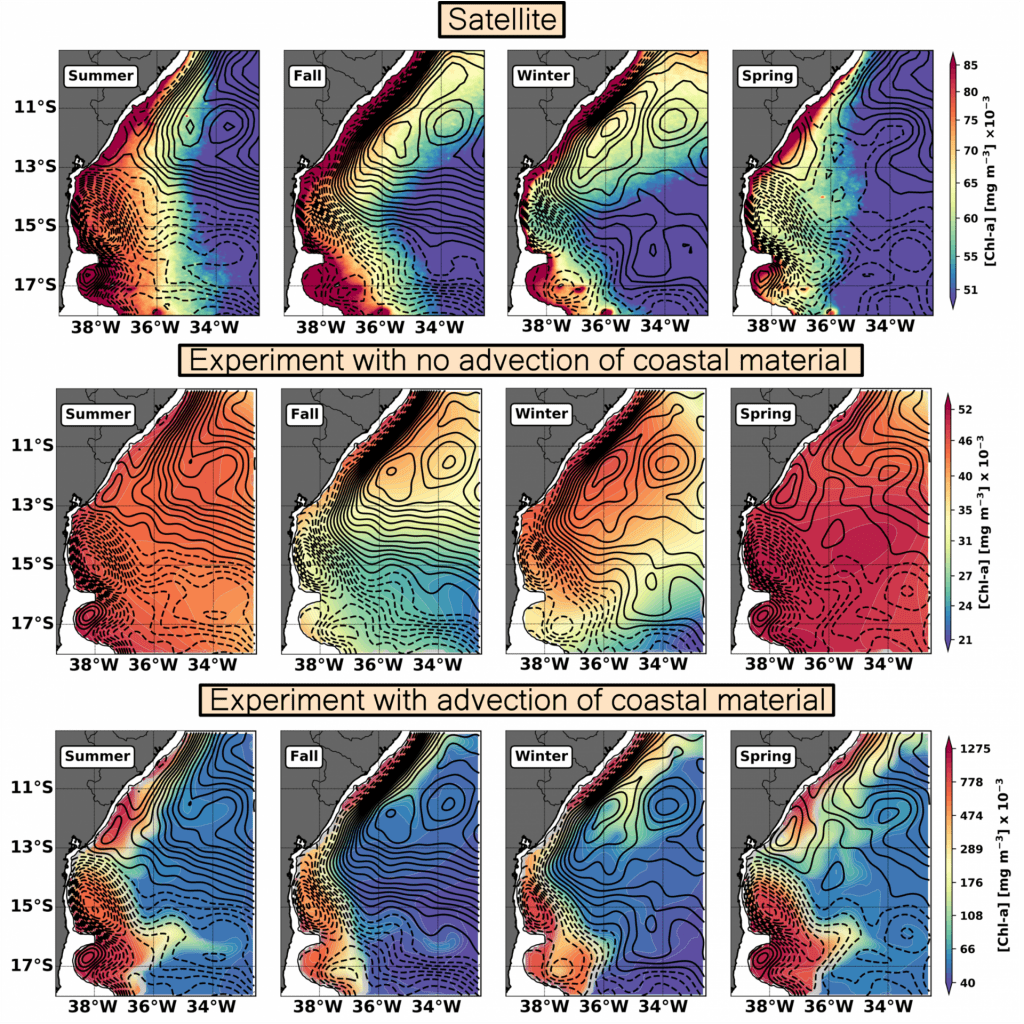A paper by Caique Luko (an M.S student from University of São Paulo co-advised by Prof. Tandon) titled “Effects of the seasonality of mesoscale eddies on the planktonic dynamics off eastern Brazil” has been published in Dynamics of Atmosphere and Ocean with Prof. Tandon and Filipe Pereira (a PhD candidate from the USP-UMassD dual-degree program) as some of the co-authors of the paper. This study was aimed to understand if the seasonality of these mesoscale eddies affects the regional phytoplankton annual cycle. To achieve that, the authors analyzed chlorophyll-a satellite observations and performed two experiments using a Nutrients-Phytoplankton-Zooplankton (NPZ) model coupled to a 1 and a 1/2 -layer Quasi-Geostrophic model.
The results reveal that the phytoplankton annual cycle off eastern Brazil is mainly controlled by the seasonally varying advection of material offshore caused by the mesoscale eddies. Such mechanism may represent an important source of material to the tropical oligotrophic ocean. More on this study could be found here.
Congratulations Caique, Filipe and Prof Tandon!!

Horizontal distributions of the streamlines and the Chl-a obtained in: (1 st row) Satellite observations; (2 nd row) Experiment with no advection of enriched coastal material; and (3 rd row) Experiment with advection of enriched coastal material. Average scenarios of: (1 st column) summer; (2 nd column) fall; (3 rd column) winter and; (4 th column) spring. The concentration of chlorophyll-a is on a logarithmic scale. Dashed lines represent negative streamlines, and solid lines represent positive streamlines. The white shaded area masks regions shallower than 100 m.
Leave a Reply